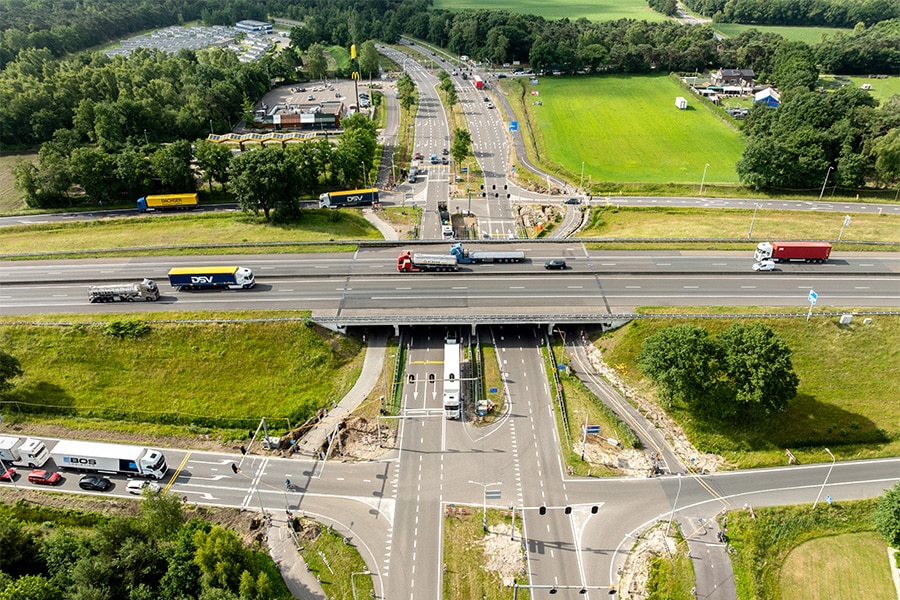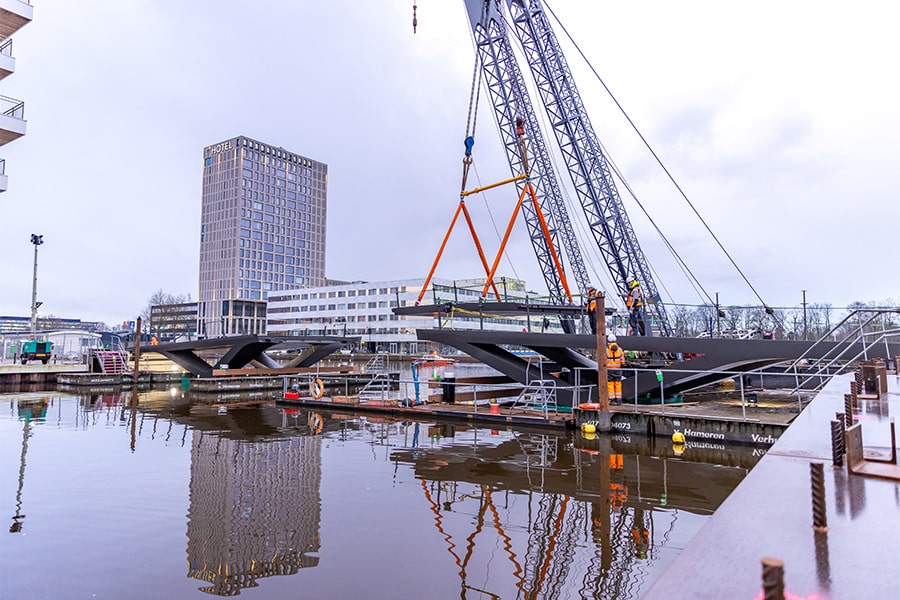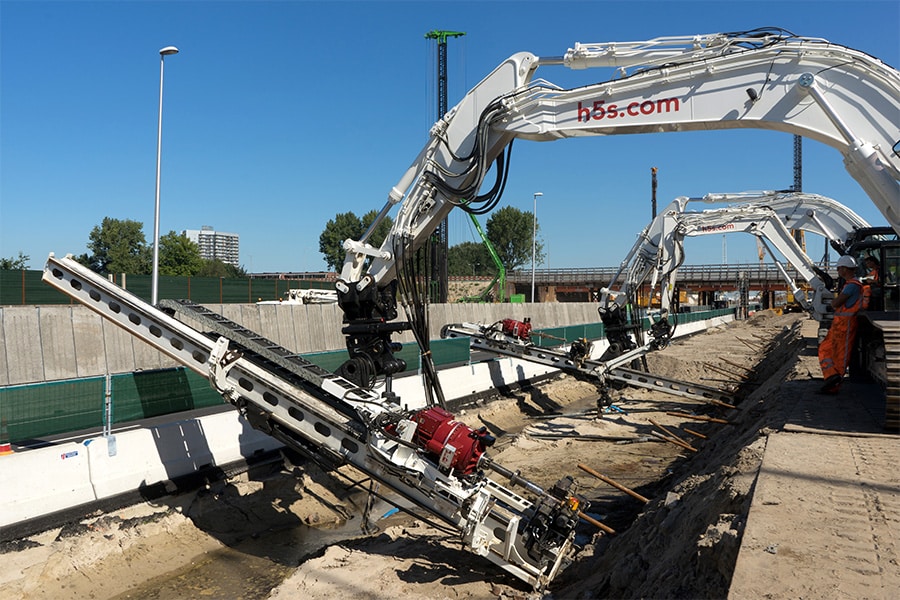
One of the Netherlands' larger weapons projects
The Blankenburg connection is one of the high-profile projects in the Netherlands right now. Looking at the amount of reinforcement steel involved, it is one of the larger projects in our country, according to Wapeningscombinatie 3DBN A15/A20 in tonnage. Some of the required reinforcement baskets are even being prefabricated fully automatically, controlled from a 3D model.
Reinforcing combination 3DBN A15/A20 was awarded the project involving some 19,000 tons of steel by BAAK mainly because of its "well-oiled" process and extreme focus on quality and safety. "Together with the Concrete Iron Bending Plant, we take care of the complete picture," says Ed Schipper of Diepstraten Reinforcing Steel. "The division of roles is clear. Diepstraten is responsible for 3D working out the reinforcement and the 'time-honored' braiding on site, while the Betonijzerbuigcentrale prefabricates the reinforcement to size in the factory based on our 3D models. An intensive collaboration that is not new to us. We also work together in the same capacity on the Thames Road route and the Green Arch."

Own modelers
With four in-house modelers, Diepstraten Reinforcing Steel works on the elaboration of all 3D reinforcement models. "3D rebar modeling is unthinkable anymore," states Schipper. "Complex reinforcement constructions are beautifully visualized this way and any clashes are prevented in advance. We also look emphatically at health and safety feasibility, possible prefabrication (time savings) and can achieve optimizations much more easily. An example of such an optimization on this project is the construction of the pillars of the structures on the A15. Here we chose to prefabricate modules of 2 meters height each, so that the reinforcement of the pillars could be built from the inside of the formwork. Not only does it save time, there is no need to build scaffolding and our braiders are 100% safely inside the formwork. After all, the piers are built right next to the highway."
3D rebar machine
Betonijzerbuigcentrale translates Diepstraten Wapeningstaal's 3D models into a cut and bent reinforcement product. "In total, we supply about 9,000 tons for the A15 and A20 structures and about 10,000 tons of reinforcing steel for both tunnels, mainly consisting of reinforcement baskets in the underwater concrete," says Mees van Wijngaarden of Betonijzerbuigcentrale. "We recently commissioned our latest 3D reinforcement machine, which was also used extensively for the production of the reinforcing steel for the Blankenburg connection. Based on a 3D model, the machine fully automatically produces a completely finished product in a constant quality. For this project, for example, we produced the transverse force baskets, hairpin baskets and the protrusion of the embankment edges on our 3D reinforcement machine."

Safety is one of the spearheads of BAAK. Diepstraten Wapeningstaal has developed a special safety/quality app that helps to check and digitally approve the 3D models. "A braider can check the 3D model on the construction site and check off whether he has properly completed the steps according to the assembly plan (derived from the 3D model). Previously, this was all done on paper. The app also includes a safety scan for reporting dangerous situations or to report an accident. It fits completely with the sustainability philosophy we aspire to as Diepstraten Wapeningstaal en Betonijzerbuigcentrale. Moreover, next April we will be certified as a combination for step 3 on the Safety Ladder."



